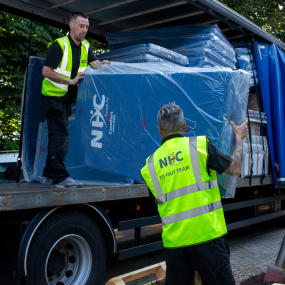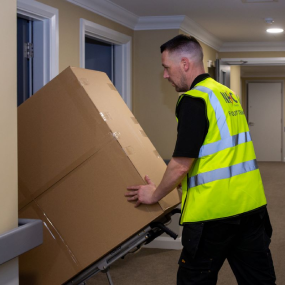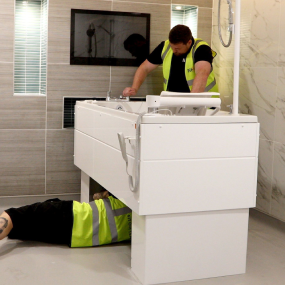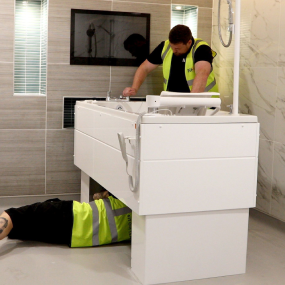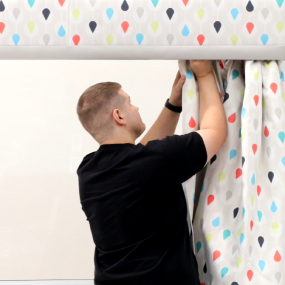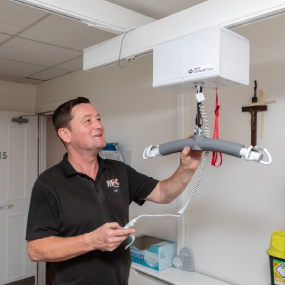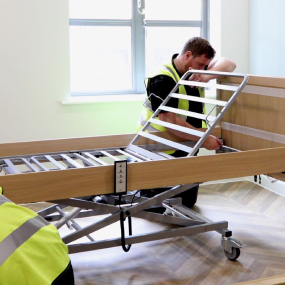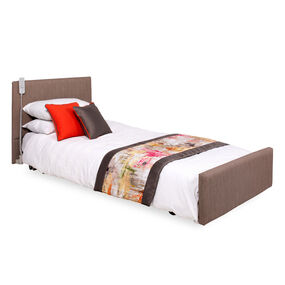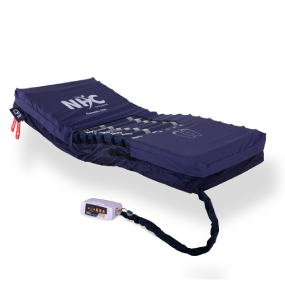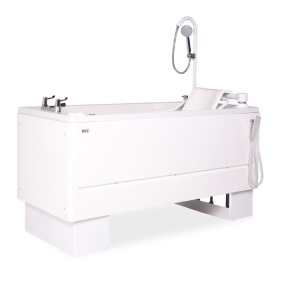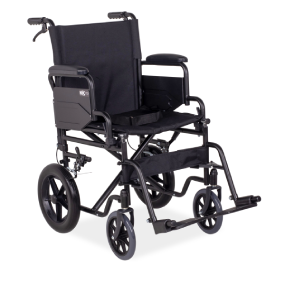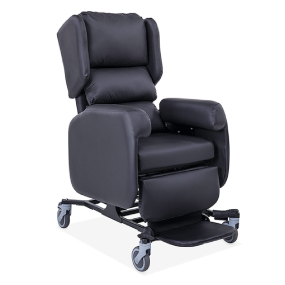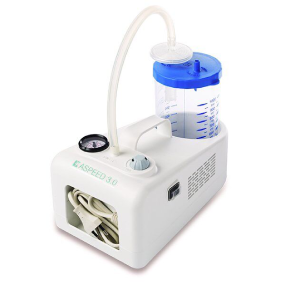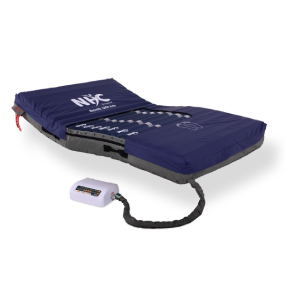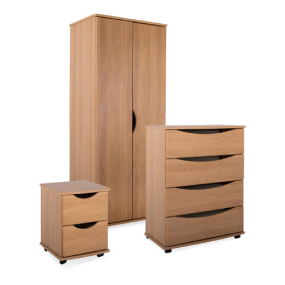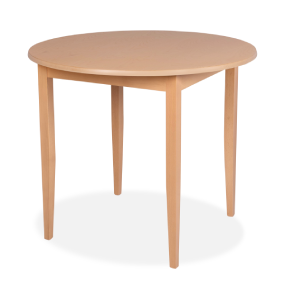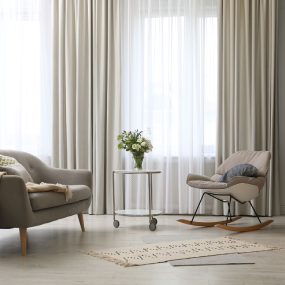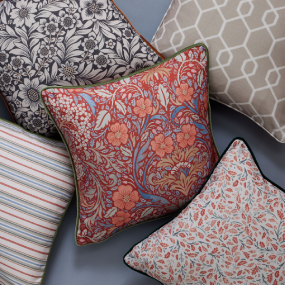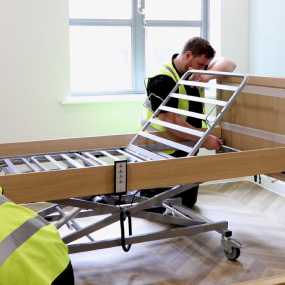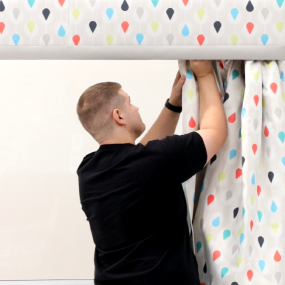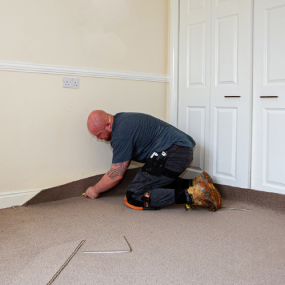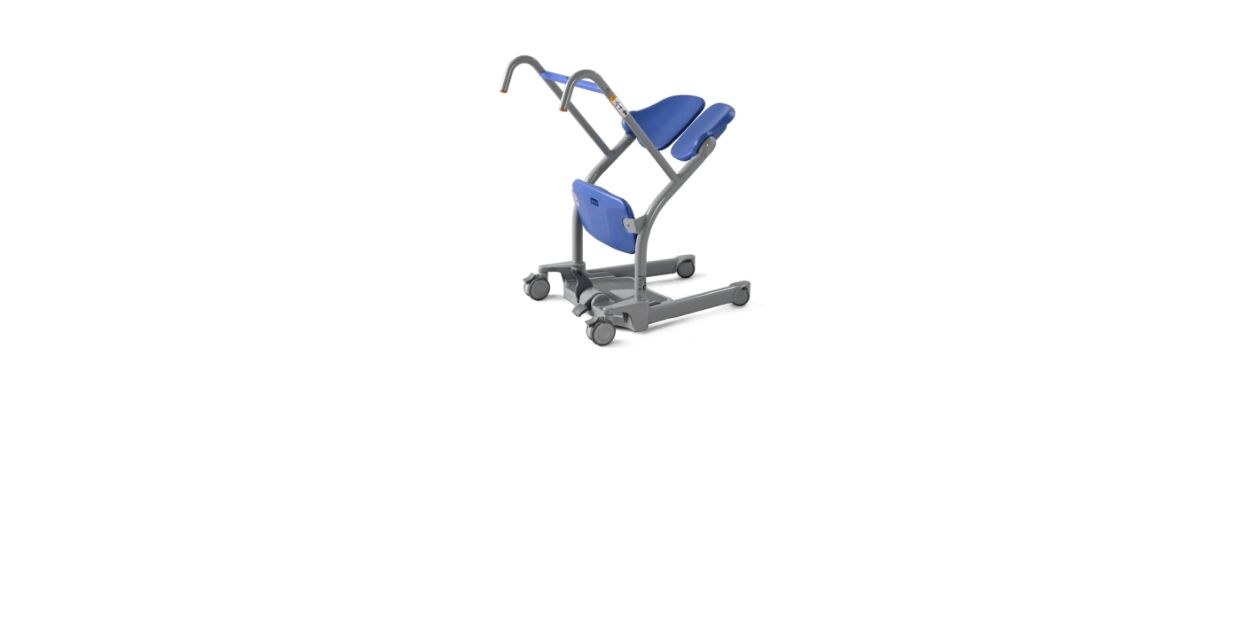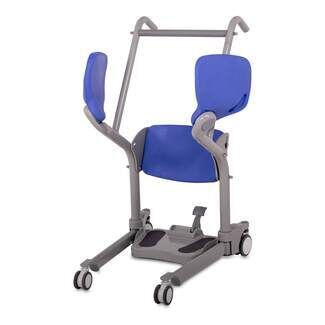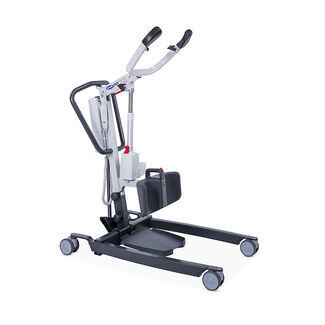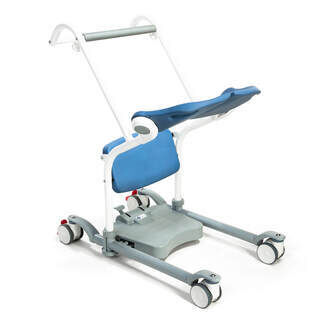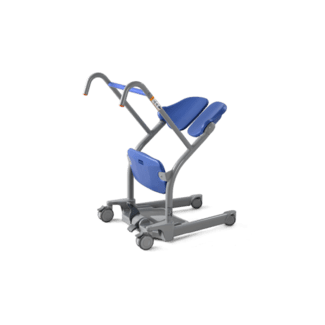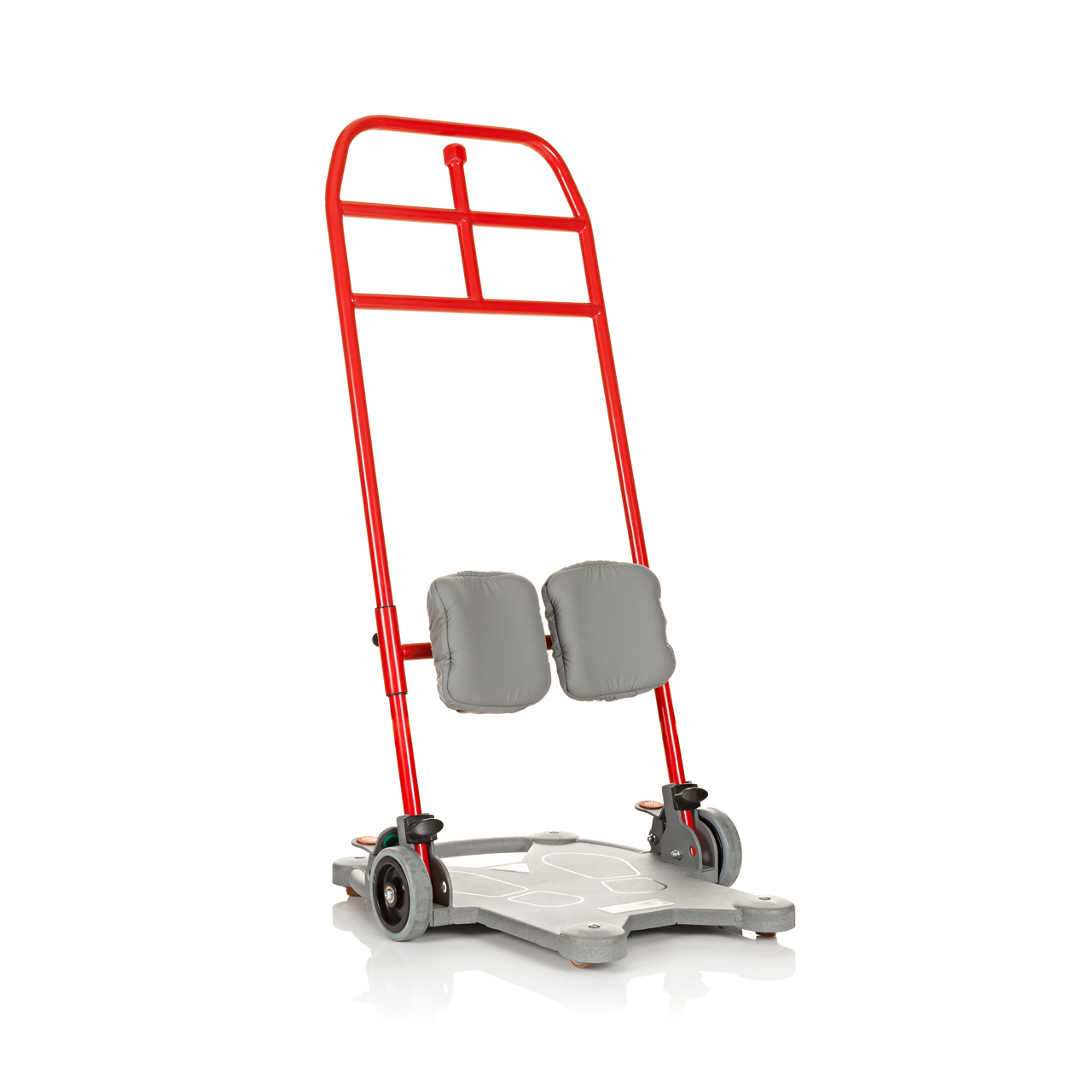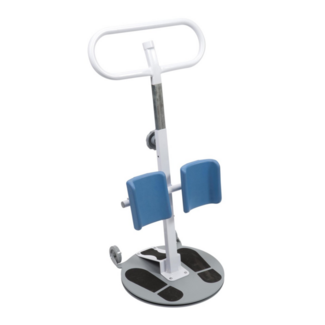Robust Supply Chain - Large Stock Holding
Nationwide Delivery, Installation & Service
Cost Efficiencies For Large Volumes
Dedicated Customer Support
Stand Aids – Offer More Independence to People with Limited Mobility
Manually transferring patients with limited mobility can be not only hard, but also risky – both for the caregivers and the patients themselves. Stand aids are a safer and more comfortable alternative for everyone.
If you’re looking for a stand aid for your care home or for caring for a loved one in the comfort of your own home, you have come to the right place. With more than 20 years in the field of medical and care home equipment, NHC Group can help you choose the right stand aid to match the user’s needs.
Not sure if stand aids are the way to go? Read on to learn more about them and whether they are what you need or not.
What Is a Stand Aid?
A stand aid is an assistive device that provides support for people who have difficulties standing up. Stand aids are very useful for the elderly (who have balance issues or have lost the strength to stand up independently), people with disabilities, or people who have limited mobility for other reasons.
Stand aids can be used by both care givers and the patients themselves. For the latter, it is important the user can support their body weight and use their legs for supportive assistance.
Do You Need a Standing Aid?
Stand aids are a great help for people with limited mobility and their care givers. Briefly put, you can use a standing aid in almost any case of limited mobility. But there are two instances where these devices can make a world of difference:
Standing Aids for Rehabilitation Patients
After prolonged illness, most patients can become deconditioned and struggle to transfer themselves independently. This can be a temporary condition (for instance, in people who have suffered an accident or have been bed-bound for a longer period of time). In this case, a standing aid offers temporary assistance, until the patient re-trains their body and their muscles gain back their strength.
More than an aid, these devices can help medical professionals assess their patient’s ability. A standing aid can help with gradual rehabilitation and with boosting patients’ self-confidence and independence.
Standing Aids for Maintaining Standing Ability
For patients with balance issue or more permanent muscle atrophy, standing aids can be used to maintain the ability to stand. In residential care environments it is common for patients to need the assistance of two people in order to stand.
A mechanised or non-mechanised stand aid can reduce the pressure on your staff members. Some residents may be able to use the standing aid on their own and thus gain more independence, while others will still need help standing up – but a single assistant will be enough to provide them with the support they need.
Standing Aids for Pressure Care Management
Residents with limited mobility are the most exposed to the risk of developing pressure sores. Aside from dedicated beds and mattresses that alleviate pressure, the best way to mitigate sores is to frequently change the position of the patient.
Stand aids are a helpful tool in promoting regular movement and position changing. They can be used for various degrees of mobility, with our without the assistance of care givers.
What Are the Main Types of Stand Aids?
At NHC Group, we have a wide variety of stand aids to fit all the different needs of their users. Before you dig deeper into the categories on our website, take a look at the two main types of standing aids you will have to choose from:
Non-Mechanised Stand Aids
As the name suggests, non-mechanised (also known as non-powered or manual) stand aids provide no mechanised assistance. Instead, they remove the need to turn (either 90 or 180 degrees) in order to change position.
Non-mechanised transfer aids are ideal for people who can use their leg strength to push themselves in an upright position. Some of these aids come with straps that keep the user’s hips extended (to help with standing) and/or with paddles that help the user sit while they are being transferred.
Mechanised Stand Aids
Mechanised or electric stand aids are the best choice for users who can bear their own weight for a short period but are unable to pull themselves up to a standing position. Mechanised transfer aids are powered by batteries and typically equipped with slings.
The care giver can use the hand control to raise and lower the patient smoothly and securely. The slings offer extra aid by helping the patient maintain a standing position while the transfer is completed.
How Do I Choose the Right Transfer Aid?
The choice between mechanised and non-mechanised stand aids is fairly simple and it depends on the user’s ability or inability to pull themselves in a standing position. But there are more criteria you should consider before pushing the buy button:
- Weight capacity: if your facility has a large number of plus-sized patients, opt for higher capacity stand aids. Each stand aid sold by NHC group has the weight capacity clearly stated. You will find transfer aids for users within different weight categories: 100 to 159 kg, 160 to 199 kg, and 200 kg and over.
- Noise level: some stand aids are quite noisy and produce sudden moves. They can be quite intimidating for elderly patients and, in turn, they can become less willing to use the transfer aids. Ask your seller about these characteristics before you buy!
- Battery portability: some transfer aids come with a portable battery, a feature that allows care givers to change a drained battery with a fully charged one. For single users, this feature may not be all that important, but if you buy a stand aid for a care home, you will find battery portability very handy.
- Risk assessment: consult with a medical professional to learn if the user(s) of the stand aid have the ability to bear their own weight while standing. This is the determining factor in choosing a mechanised or non-mechanised stand, as well as in choosing the right extra options and features for your stand aid.
- Service and maintenance: stand aids are an investment, a piece of equipment you should ideally use for years to come. You can prolong the life span of your transfer aids with regular maintenance and service. When you buy them, choose a provider that offers service and maintenance to your location. At NHC Group, for instance, you can rely on our skilled technicians for stand aids service and maintenance all over the UK.
Ready to choose? At NHC (Northern Healthcare) we provide a range of stand aids, which are used to help make getting in and out of bed easier. These are perfect for anyone who has limited mobility or for disabled users.
If you’re still unsure about which stand aid is ideal for you, we’re happy to help! For more than 20 years, we have been providing care homes in the UK with the right furniture and medical equipment for their residents, so we understand your needs. Get in touch with our expert consultants and let’s choose the ideal stand aids for your care home!
How much does a cheap stand aid cost?
Stand aid prices start from a couple hundred pounds. You can get a cheap non-mechanised stand aid for around £300+. The more complex the aid, the higher the price.
How much does a good mechanised stand aid cost?
If you’re looking for a good, mid-range mechanised standing aid, expect to pay around £1500. The price can increase or decrease depending on the brand you choose and the accessories and features of the device.
Can I use a standing aid in my home?
Yes, you can! In fact, it is highly recommended to use a transfer aid if you care for a loved one at home. A stand aid can help reduce the number of accidents and injury risk to both care giver and patient. This is especially important when the care giver is not a medical professional and when they don’t have the support of a large staff, as it happens in hospitals and care homes.
Can one person use a standing aid?
Yes, there is no legal requirement or recommendation regarding the number of people who can use a stand aid. In the case of non-mechanised aids, they can easily be used by a single person. Some devices, however, will require at least one care giver to assist the user. Make sure you ask your supplier about this before buying!
Do you need special training to use a stand aid?
Not necessarily. Some standing aids are complex devices, with a lot of features and options, so a minimal training is needed. But in general, these devices can be used by anyone. If you’re looking for a more sophisticated stand aid, NHC Group can help you with employee or user training.


